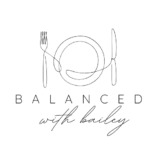Why It’s More Important Than You Think!
If you’ve ever wondered whether you’re getting enough protein—or if protein is something you only need to worry about if you’re working out daily—this post is for you. Protein isn’t just for athletes or gym-goers. It plays a critical role in everyday wellness, especially for women who are trying to balance their hormones, support their metabolism, and feel more energized.
Protein is one of the three essential macronutrients, along with carbohydrates and fat. It’s made up of amino acids, which are the building blocks your body uses to build and repair tissues, create enzymes and hormones, and support immune and brain health. Protein also helps you feel full and satisfied, which can reduce cravings and help with portion control. One important thing to know about protein is that your body doesn’t store it the way it stores carbs and fat—so you need to consume it regularly throughout the day.
When it comes to how much protein you need, most adults do well with about 0.8 to 1.2 grams per kilogram of body weight. That’s roughly 55–80 grams per day for the average woman, though your needs may be higher or lower depending on your health status and lifestyle. For example, if you’re physically active, pregnant, breastfeeding, or recovering from illness or surgery, your protein needs may be higher. On the other hand, if you have a medical condition such as chronic kidney disease (CKD), you may need less protein. This is where individualized nutrition guidance really matters—especially if you’re managing a health condition.
As a general rule of thumb, try to include 20–30 grams of protein at each meal, and a protein-rich snack at some point during the day. Spreading your protein intake throughout the day helps your body use it more efficiently, and can support muscle repair, hormone production, and stable energy levels.
One of the most common questions I get is about the difference between animal-based and plant-based proteins. Animal sources—like eggs, poultry, fish, dairy, and meat—are considered complete proteins, meaning they contain all nine essential amino acids your body needs. Plant-based sources—such as beans, lentils, tofu, nuts, and seeds—are often incomplete on their own but can be combined throughout the day to meet your needs. Quinoa, soy, and hemp seeds are examples of plant-based complete proteins. Both types of protein can absolutely be part of a healthy, balanced diet—it just comes down to your personal preferences, dietary pattern, and what feels best for your body.
If you’re wondering where to start, focus on high-quality, whole food sources of protein. Great options include Greek yogurt, cottage cheese, eggs, chicken, turkey, tuna, salmon, tofu, tempeh, lentils, and hemp seeds. Protein powders can be convenient too—just be sure to check the ingredient list and look for options without added sugars, artificial sweeteners, or unnecessary fillers.
Adding protein to your meals doesn’t have to be complicated. You can stir protein powder into a smoothie or bowl of oatmeal, top a salad with grilled chicken or beans, or snack on hard-boiled eggs, edamame, or cottage cheese. Adding just a little more protein to each meal or snack can go a long way in supporting your energy, mood, and metabolism throughout the day.
Lastly, let’s clear up a common myth: No, protein will not damage your kidneys—unless you already have an existing kidney condition. Higher protein intake is safe and beneficial for most healthy individuals, especially when it comes to maintaining lean muscle and metabolic health. And no, eating more protein won’t make you bulky. In fact, it supports lean muscle and can help your body feel strong, energized, and balanced.
In summary, protein isn’t just about muscles—it’s essential for your hormones, metabolism, and overall well-being. If you’re looking to support your health in a sustainable way, start by building meals that include a good source of protein. Your body will thank you.
What’s your favorite way to add protein to your meals? Let me know in the comments, or tag me @baileytaylor_rdn on Instagram—I’d love to hear from you!
And stay tuned—next, I’ll be breaking down carbohydrates and how they fuel your body in part two of the “Mastering Macros” series!

